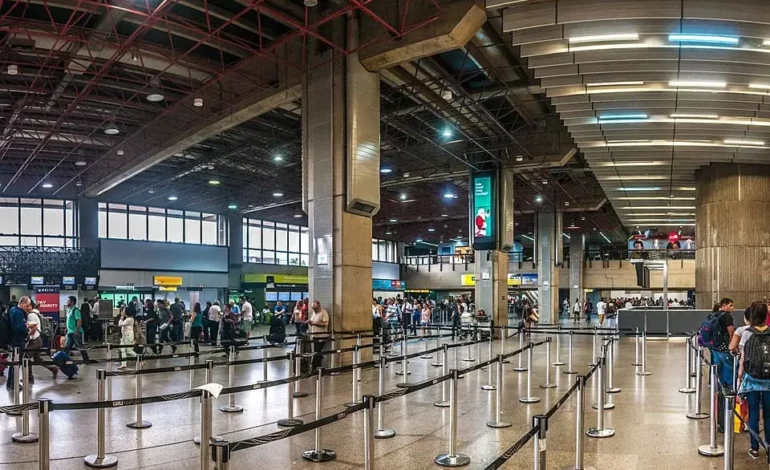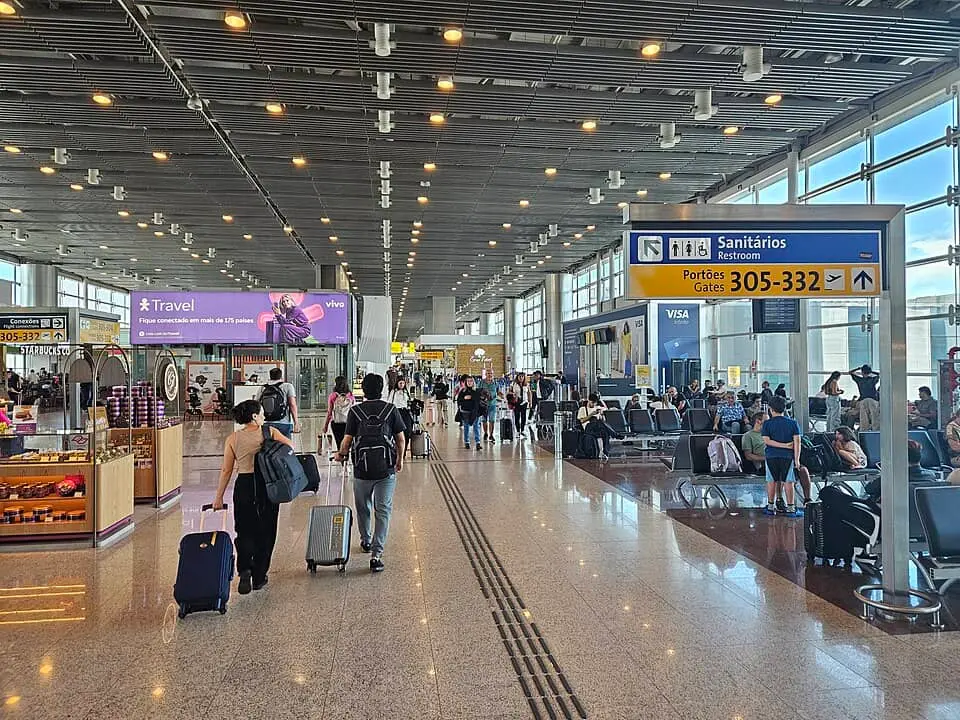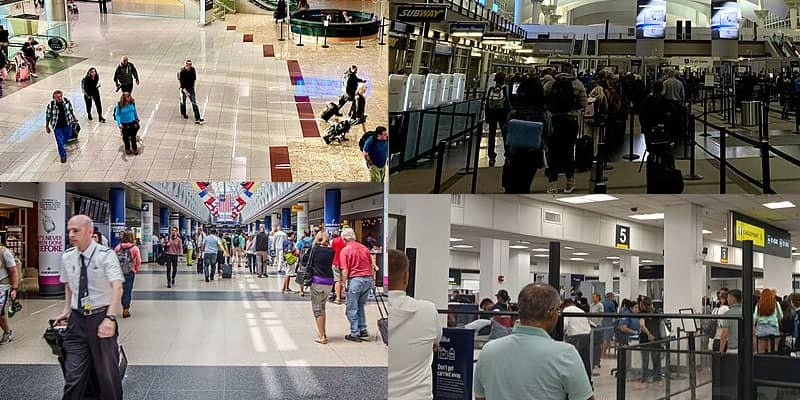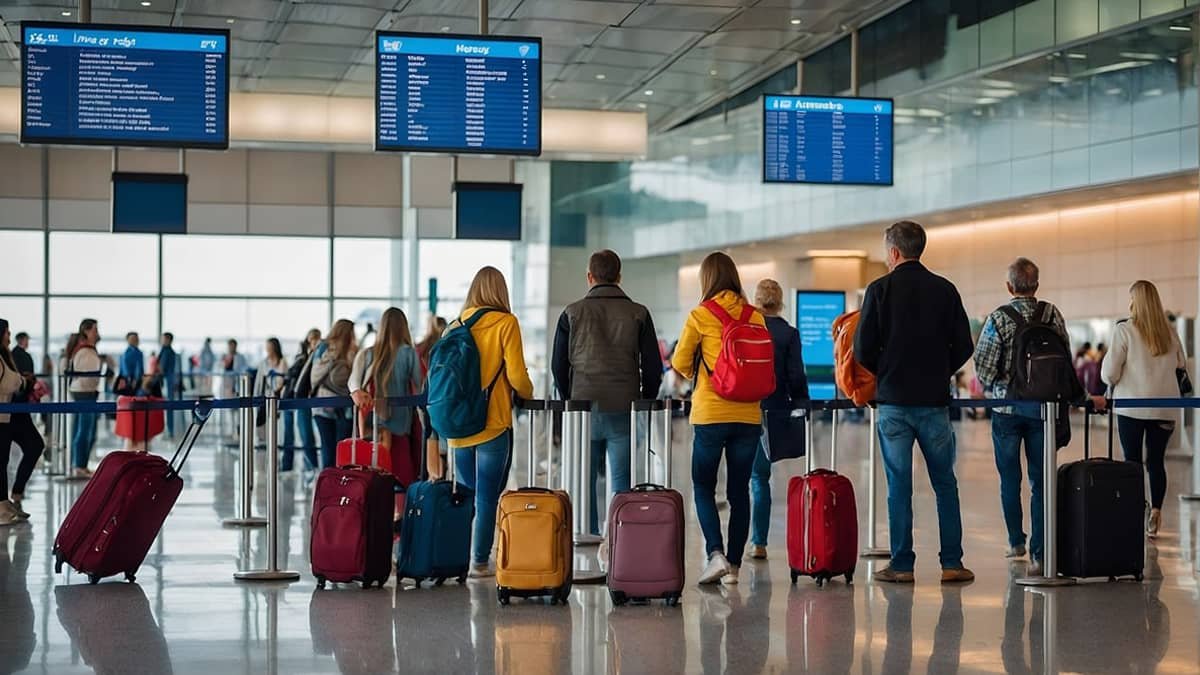Top 8 Busiest Airport in Brazil: A Quick Guide

Brazil, the largest country in South America, spans over 8.5 million square kilometers, making its aviation sector a vital component of its infrastructure. With a population exceeding 200 million and a thriving tourism industry, the country’s busiest airports serve as essential hubs for both domestic and international travel. These airports connect Brazil’s sprawling regions, support its growing economy, and act as gateways to its iconic cities and natural wonders.
In this detailed article, we explore the top 8 busiest airports in Brazil, providing insights into their passenger traffic, locations, key features, and their significance to the nation’s aviation network. Together, these airports handle millions of passengers annually, reflecting Brazil’s importance on the global stage.
1. São Paulo-Guarulhos International Airport (GRU)
- Passenger Traffic: Over 40 million passengers annually.
- Location: Located in Guarulhos, approximately 25 kilometers northeast of São Paulo’s bustling city center.
- Key Features: São Paulo-Guarulhos International Airport, often referred to as Cumbica Airport, stands as Brazil’s busiest and most prominent international gateway. Opened in 1985, it boasts three passenger terminals and two runways, accommodating a vast network of flights. As a hub for major airlines like LATAM Brasil and Gol Transportes Aéreos, GRU connects Brazil to destinations across the Americas, Europe, Africa, and Asia. Beyond passenger services, it is a powerhouse for cargo operations, ranking among the largest cargo hubs in Latin America.
- Significance: Serving São Paulo, Brazil’s financial and commercial capital, GRU is indispensable for global connectivity. It handles a significant share of the country’s international passenger traffic and supports Brazil’s trade and tourism sectors, making it a cornerstone of the nation’s aviation system.
2. Congonhas-São Paulo Airport (CGH)
- Passenger Traffic: Approximately 20 million passengers annually.
- Location: Situated just 8 kilometers from São Paulo’s city center, in the heart of the metropolis.
- Key Features: Congonhas-São Paulo Airport, established in 1936, is one of Brazil’s oldest and most iconic airports. Primarily focused on domestic flights, it specializes in short-haul routes to key cities like Rio de Janeiro, Brasília, and Belo Horizonte. Its central location makes it a favorite among business travelers, though its smaller size and urban surroundings limit its capacity for expansion. The airport’s historical charm and Art Deco terminal add to its unique character.
- Significance: Congonhas complements GRU by catering to the high demand for domestic travel within Brazil. Its proximity to São Paulo’s business districts ensures it remains a critical hub for corporate travelers and regional connectivity.
Explore More- List of Top 8 Busiest Airports in Sweden
3. Brasília International Airport (BSB)
- Passenger Traffic: Around 15 million passengers annually.
- Location: Located in Brasília, Brazil’s capital, approximately 11 kilometers from the city center.
- Key Features: Brasília International Airport, officially named Presidente Juscelino Kubitschek International Airport, is celebrated for its modern architecture, designed by the legendary Oscar Niemeyer. Reflecting the planned, futuristic layout of Brasília—a UNESCO World Heritage site—the airport is both functional and visually striking. It serves as a major hub for domestic flights while offering international connections to South America, North America, and Europe.
- Significance: As the gateway to Brazil’s political heart, BSB is essential for government and diplomatic travel. It also connects the country’s central region to other major cities, reinforcing Brasília’s role as a national hub.
4. Rio de Janeiro-Galeão International Airport (GIG)
- Passenger Traffic: Approximately 14 million passengers annually.
- Location: Situated on Governador Island, about 20 kilometers from downtown Rio de Janeiro.
- Key Features: Rio de Janeiro-Galeão International Airport, also known as Tom Jobim International Airport, traces its origins to the 1920s. It gained global attention during the 2014 FIFA World Cup and the 2016 Summer Olympics, underscoring its importance as Rio’s primary international airport. Recent renovations aim to expand its capacity and upgrade its facilities, enhancing the passenger experience with modern amenities.
- Significance: GIG is a linchpin for international tourism, linking Rio de Janeiro—famous for Carnival and Copacabana Beach—to the world. It also supports domestic travel and cargo operations, bolstering the region’s economy.
Explore More- Top 10 Busiest Airports in the Middle East

5. Belo Horizonte-Confins International Airport (CNF)
- Passenger Traffic: Around 10 million passengers annually.
- Location: Located in Confins, roughly 38 kilometers from Belo Horizonte, the capital of Minas Gerais.
- Key Features: Belo Horizonte-Confins International Airport, officially Tancredo Neves International Airport, has undergone significant expansion to meet rising demand. With modern terminals and a range of amenities, including shopping and dining options, it serves as a hub for Azul Brazilian Airlines. The airport connects passengers to both domestic destinations and select international routes.
- Significance: CNF is a vital link for Minas Gerais, a central state known for its mining and industrial output. It enhances connectivity between Brazil’s interior and coastal regions, supporting passenger and cargo traffic alike.
6. Salvador-Deputado Luís Eduardo Magalhães International Airport (SSA)
- Passenger Traffic: Approximately 8 million passengers annually.
- Location: Situated in Salvador, the capital of Bahia, about 28 kilometers from the city center.
- Key Features: Salvador-Deputado Luís Eduardo Magalhães International Airport, also known as Salvador Bahia Airport, is a key entry point to Brazil’s vibrant northeast. Its single terminal incorporates design elements inspired by the region’s rich cultural heritage. Recent upgrades have improved operational efficiency and passenger comfort, making it a welcoming hub for travelers.
- Significance: SSA drives tourism to Salvador, a city renowned for its historic Pelourinho district, beaches, and Afro-Brazilian culture. It also supports the northeast’s economic growth by facilitating business travel and cargo transport.
Explore More- List of Top 10 Busiest Airports in the United Kingdom
7. Recife-Guararapes International Airport (REC)
- Passenger Traffic: Around 7 million passengers annually.
- Location: Located in Recife, Pernambuco, approximately 11 kilometers from the city center.
- Key Features: Recife-Guararapes International Airport, officially Gilberto Freyre International Airport, is a hub for Azul Brazilian Airlines. It offers efficient operations and modern facilities, including a spacious terminal and diverse retail options. The airport connects passengers to domestic destinations and a handful of international routes, primarily within South America.
- Significance: REC is a cornerstone of connectivity in Brazil’s northeast, supporting tourism to Recife’s beaches and cultural landmarks. It serves as a transit point for travelers exploring the region’s coastal cities and vibrant heritage.
8. Porto Alegre-Salgado Filho International Airport (POA)
- Passenger Traffic: Approximately 7 million passengers annually.
- Location: Situated in Porto Alegre, the capital of Rio Grande do Sul, about 10 kilometers from the city center.
- Key Features: Porto Alegre-Salgado Filho International Airport, named after a notable Brazilian politician, is a compact yet efficient facility serving southern Brazil. It offers domestic flights and international connections to nearby countries like Argentina and Uruguay. Recent improvements have enhanced its passenger services, maintaining its reputation for reliability.
- Significance: POA connects southern Brazil to the rest of the country and beyond, supporting the region’s agricultural exports and tourism to the scenic landscapes of Rio Grande do Sul.
Conclusion
Brazil’s top 8 busiest airports are more than mere transit hubs—they are vital arteries of connectivity, economic vitality, and cultural exchange. From the international prowess of São Paulo-Guarulhos to the regional importance of Porto Alegre-Salgado Filho, each airport contributes uniquely to Brazil’s aviation ecosystem. Together, they handle tens of millions of passengers annually, linking Brazil’s diverse regions and reinforcing its position as a global player. As the country continues to grow, these airports will remain essential, driving progress and ensuring that Brazil stays connected to the world.
Image Credits- São Paulo Guarulhos Airport








